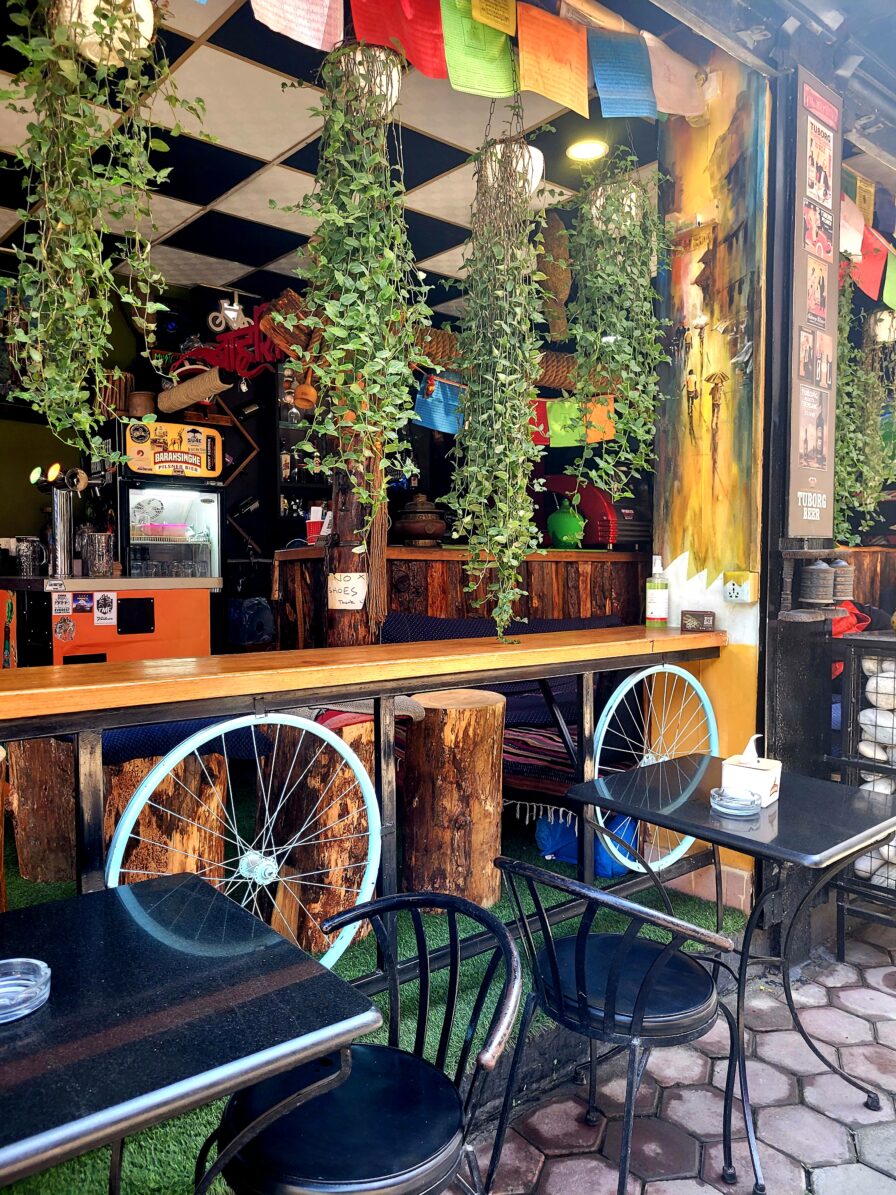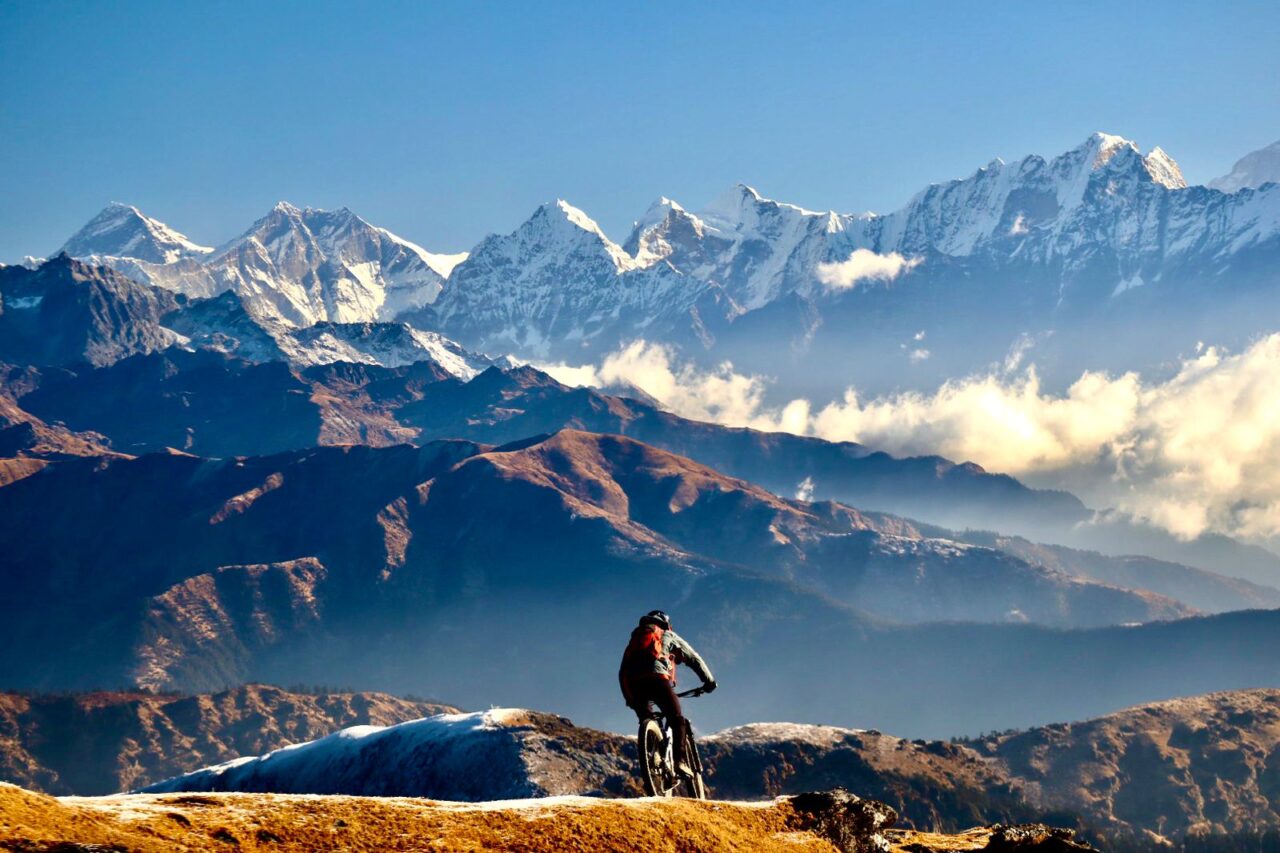Biking on Top of the World: What It’s Like to Cycle Around Earth’s Most Famous Mountains
Cycling in the Himalayas
When you think of Nepal, the first thing that probably comes to mind is trekking. While on-foot activities are, in fact, arguably the most popular activity here, Nepalis also offer plenty of opportunities to cycle around the country. Himalayan cycling is a great way to experience the tallest mountain range in the world.
I sat down with Santosh Rai, the co-founder of Himalayan Single Track, which has been operating cycling tours and selling equipment in Kathmandu for the last 14 years. He kindly agreed to talk to me on the spot and offer some thoughts about what it’s like to cycle in this wondrous mountain paradise.
Santosh’s store sits in a quaint little nook amidst coffee shops that open early to offer breakfast to energetic tourists eager to get going on their daily excursions. Opposite the bike shop is a cute little “bicycle bar” where cyclists can crash for a cold “Everest” upon completing a rigorous circuit.

I asked Santosh about the nature of his cycling tours, how long they last, and what the particularities of cycling in this exotic region are.
Covid concerns
He explained that things have changed quite a bit recently. As the world starts to get back in order following the worst of Covid, people are anxious to get out again. Nonetheless, having been immobile for two years has given many riders a certain degree of caution with regard to hitting the roads again full-steam. And while cycling is a relatively low-risk activity when it comes to potential disease exposure, the collective paranoia that the world has felt as a result of the pandemic made many reluctant to venture out anywhere until just recently.
In addition, traveling overseas means getting places, and this has been extremely complicated for most of the last two years. Therefore, touristic businesses like Santosh’s are just starting to get back in order and trips tend to be shorter in length than they were pre-pandemic. On average, cycling tours in Nepal now generally run 10-15 days, as opposed to 21 or so previously.
Cycling and sleeping in the mountains
I asked about accommodation preferences on long trips. For multi-day tours, both trekkers and cyclists are starting to favor lodging in “tea houses” these days, rather than tents. These little cottages (which sometimes take the form of long buildings divided into units) are usually somewhat Spartan in appearance, but they offer basic facilities and are a welcome sight at the end of a long day of exercise. Tour packages include both accommodation and meals.

While riding in the narrow streets of Kathmandu can be a challenge (some might say suicidal!) due to the speed and random swerving nature of the city’s many motorcyclists, cycling tours tend to start well outside of town. Santosh explained that the cities of Bidur (about 2h by car from Kathmandu) and Manang (about 11h away) are typical starting points for his tours. For more exotic trips, sometimes a combination of Jeep and helicopter is necessary to reach starting destinations.
I was curious to learn about the particular draws and challenges of cycling in this famously high terrain. Santosh explained that his company is very cautious about every aspect of their tours, from preparation to allowing participation to the actual carrying out of daily activities. First of all, he said, people must prove their existing physical fitness levels and pass a medical test before joining any of the tours. The last thing they want is for someone who claims to be super fit to suddenly collapse on the first day of a trip. Beginners would not necessarily be turned away, he explained, but rather encouraged to do an easier ride.
About the demographic of his participants, Santosh said that it is very broad, but that Europeans and Americans probably make up the greatest percentage of the groups.
Beware of the altitude
Also – perhaps even more so than for trekkers – pacing oneself is extremely important at such high altitudes. Santosh said that his tours often take cyclists to peaks of higher than 5000m, but that he requires several days’ gradual climb to reach that height. Altitude sickness can be a serious issue here, and of course cyclists exert themselves even more than hikers do, so exercising caution is imperative.
Behold the view!

In the end, it is always worth it. The views up in the mountains are unbeatable, and you might be lucky enough to cross the occasional yak along the way. Experienced guides offer not only assistance and historical background, but also companionship.
Santosh’s tours start at one day for those not looking for a long-term adventure. Tours can cost as much as $4000 (if they include air travel), but given the complexity of reaching some of the more remote destinations, his prices make sense. Himalayan Single Track also offers trekking, Enduro trips, and multi-adventure tours. Companies like this certainly offer a once-in-a-lifetime opportunity to cycle on top of the world.


